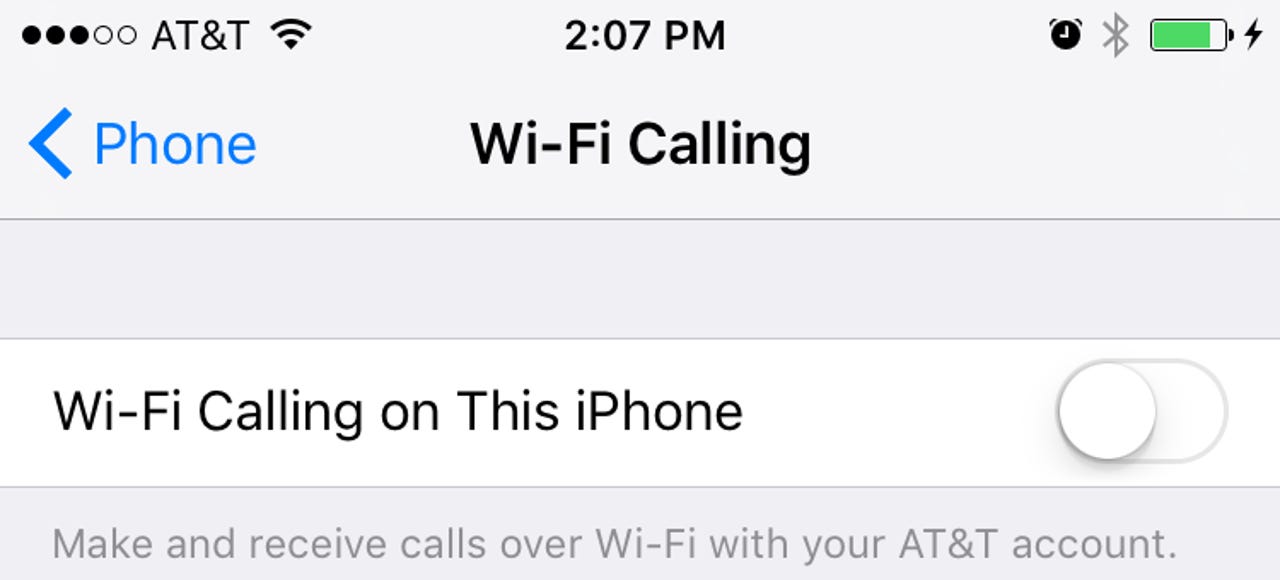iOS 9 beta code hints AT&T Wi-Fi calling could arrive with new iPhone

Last year, AT&T said it planned to offer Wi-Fi calling in 2015 and we're still waiting for it. The wait looks nearly over, however, based on the latest beta of iOS 9, which Apple released on Thursday.
Scanning through the changes, 9to5 Mac found Wi-Fi Calling support settings on an AT&T iPhone. The feature can be enabled in the iOS 9 beta, but doesn't yet work as AT&T hasn't yet officially launched Wi-Fi calling.

With five months left in the year, AT&T will surely do so in the near future. And for it to work on iPhones, the software has to support it. That doesn't mean Wi-Fi calling will arrive for certain in conjunction with the next iPhone launch -- expected in September -- but it does make it a strong possibility.
Of course, I wouldn't expect the carrier to add the feature just to iPhones, whether they're old or new models.
A software update for Android handsets from various manufacturers could enable it as well; Samsung models seem the most likely candidate.
Featured
Samsung models represent the biggest non-iPhone models so AT&T will want to keep Samsung device owners happy as well. That doesn't preclude handsets from LG, Motorola and others from also gaining the ability to place calls over Wi-Fi, but I won't be surprised if Samsung's phones get it first.
Unlike T-Mobile, which has offered Wi-Fi Calling for some time, AT&T isn't likely in a position where it needs to use unlicensed spectrum to free up cellular network capacity, although it may help do so. Instead, the new feature is more likely aimed at offering customers with something that other carriers already provide so that competitors can't tout the exclusivity of it.
Either way, when AT&T does bring Wi-Fi calling to the market, it can benefit those who might not have the best indoor mobile broadband signal in their home or office.